Physical Address
304 North Cardinal St.
Dorchester Center, MA 02124
Physical Address
304 North Cardinal St.
Dorchester Center, MA 02124
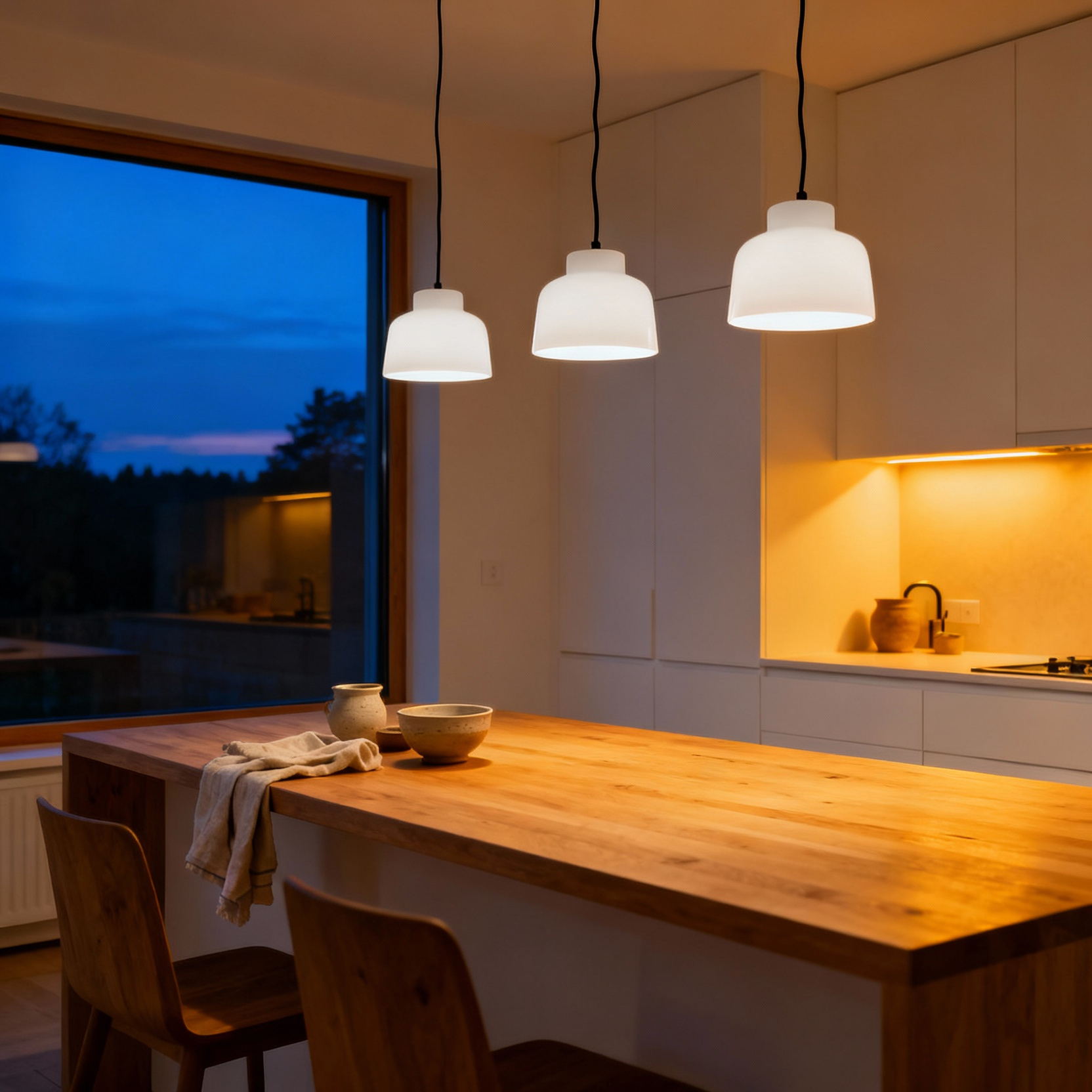
Optimize your kitchen with the perfect lighting strategy. Learn how to choose the best kitchen light fixtures, from cozy 2700K pendants to functional recessed LEDs, achieving hygge and shadow-free prep.
In the depths of a Nordic winter, the sun retreats by mid-afternoon, and darkness wraps around our homes like a heavy blanket. I vividly remember my grandmother’s kitchen in Copenhagen during those long months; she never relied on a single, blinding overhead bulb to push back the night. Instead, she created gentle pools of warmth with layered pendants and soft candles. Finding the right kitchen light fixtures was never merely a utility to help us chop vegetables; it was a vital companion that made us feel safe, connected, and calm.
Too many modern kitchens resemble sterile laboratories, flooded with harsh, blue-toned light that strains the eyes and chills the spirit. This approach ignores a fundamental truth: the kitchen is the heart of the home, not a factory floor. True Scandinavian minimalism rejects this coldness. We prioritize *Hygge*—a feeling of cozy contentment—over raw brightness. We design for visual comfort, ensuring that lighting fixtures illuminate our lives without the assault of glare, turning a functional space into a source of emotional well-being.
You do not need to endure a polar night to appreciate the power of thoughtful illumination. By mastering the art of layering—balancing ambient, task, and accent lights—you can transform a chaotic workspace into a sanctuary. This guide explores how to select natural materials and warm color temperatures to invite calm into your daily rituals, shifting the focus from simple utility to the creation of a genuine atmosphere.
Growing up in Copenhagen, I learned early on that light defines the soul of a home. To master the Scandinavian look, you must merge the standard three layers—ambient, task, and accent—with a Nordic reverence for softness. Begin with your ambient foundation by selecting bulbs with a color temperature of 2700 Kelvin or lower. This specific warmth evokes the cozy feeling of *hygge*, mimicking firelight to counter the cold darkness outside.

Next, prioritize functionality without visual clutter. Your task lighting must illuminate work surfaces powerfully while remaining invisible. Utilize hidden LED strips under cabinets and simple, downward-facing pendants over islands. Crucially, avoid the harsh glare of a naked bulb. Instead, diffuse light through kitchen light fixtures made of natural materials that add texture without excess ornamentation:
By hiding the source and highlighting these honest materials, you create a kitchen that feels warm, not just bright.
True hygge lives in the balance between function and feeling. In my own Copenhagen home, I refuse to sacrifice atmosphere for visibility, so I employ a strategic split within the 2700K–3000K range. Select 3000K for task-heavy zones like recessed cans and under-cabinet strips; this temperature offers clean clarity for chopping vegetables without turning harsh. Conversely, reserve 2700K for your dining pendants and wall sconces. This softer hue mimics the incandescent glow of candlelight, instantly softening the room’s edges and inviting conversation.

Additionally, flexibility defines a comfortable Nordic home. You cannot achieve true contentment without the ability to manipulate the mood through layered technology and materials.
By layering these elements, you ensure your minimalism remains inviting rather than sterile.
To foster true connection, bring the light down. In my own kitchen, I position pendants at the “intimate zone,” roughly 30 to 32 inches above the countertop. This placement lowers the visual ceiling, effectively creating a cozy room within a room. Consequently, the light anchors the space, inviting family to lean in and linger rather than stand back.

However, the material you choose dictates the atmosphere. Consider these distinct approaches:
Therefore, select the pendant light fixtures that best support your specific ritual of gathering; functionality and warmth must always align.
True comfort requires honesty in materials. Choose kitchen fixtures crafted from solid oak, ash, or walnut rather than synthetic imitations. The visible grain introduces a necessary tactile warmth, grounding your space in the calming rhythms of nature. In my own design practice, I prioritize this “material truth” because it fosters a genuine connection to the outdoors, essential for combatting the darkness of Nordic winters.
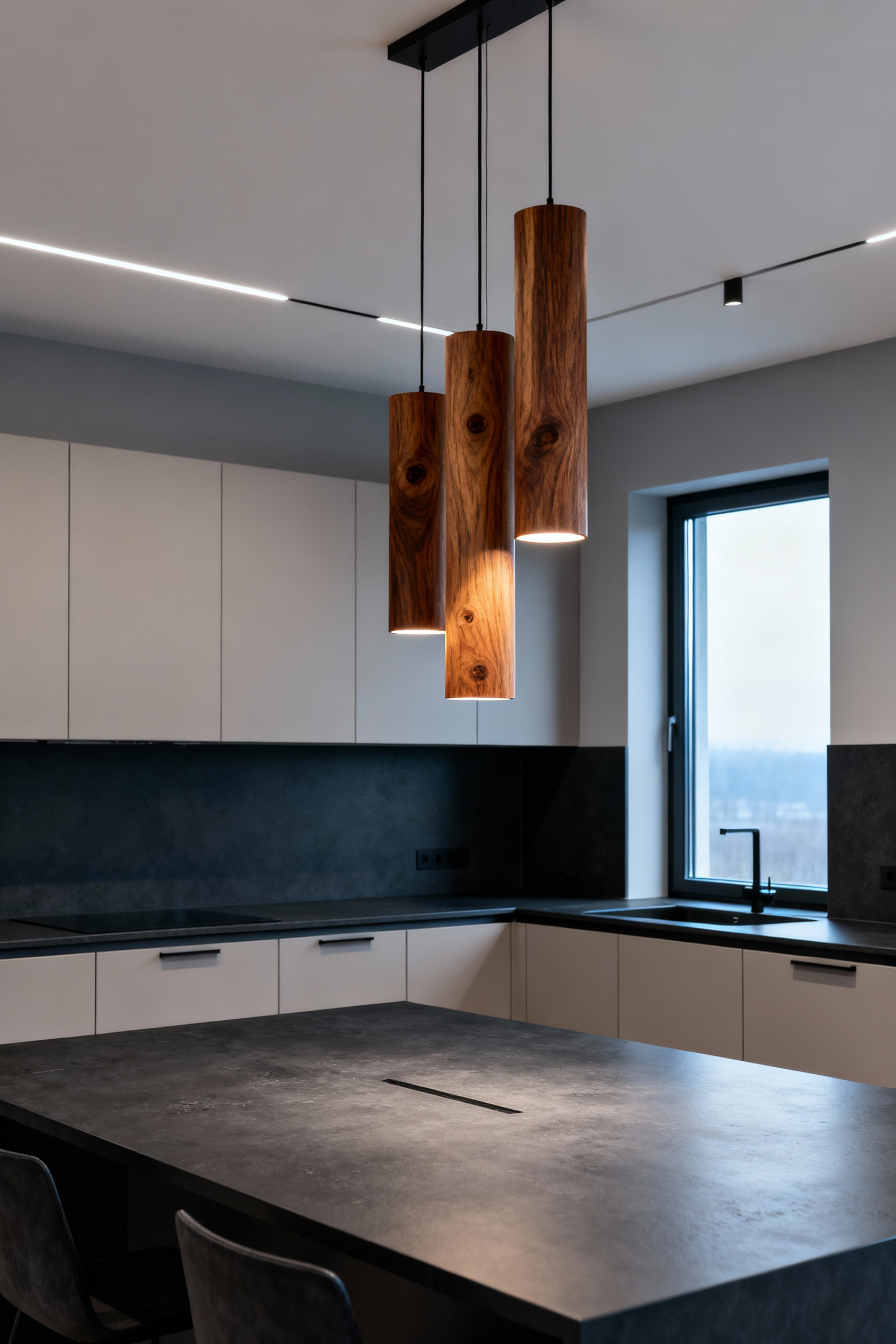
Balance this organic warmth with the quiet sophistication of matte finishes. Unlike high-gloss surfaces that demand constant polishing, matte metals forgive the chaos of a busy kitchen. I frequently recommend matte black or earth-toned housings for three specific practical benefits:
By integrating natural wood with forgiving matte textures, you cultivate a kitchen that feels both modern and deeply restful.
True comfort arises from effortless function. In Scandinavia, where winter light is precious, we design our kitchens so that illumination assists the cook rather than hindering them. Position your recessed kitchen light fixtures 12 to 18 inches from the wall, aligning the center of the light with the front edge of the countertop. This specific placement ensures the beam falls in front of you, preventing your body from casting a frustrating shadow over the prep surface.
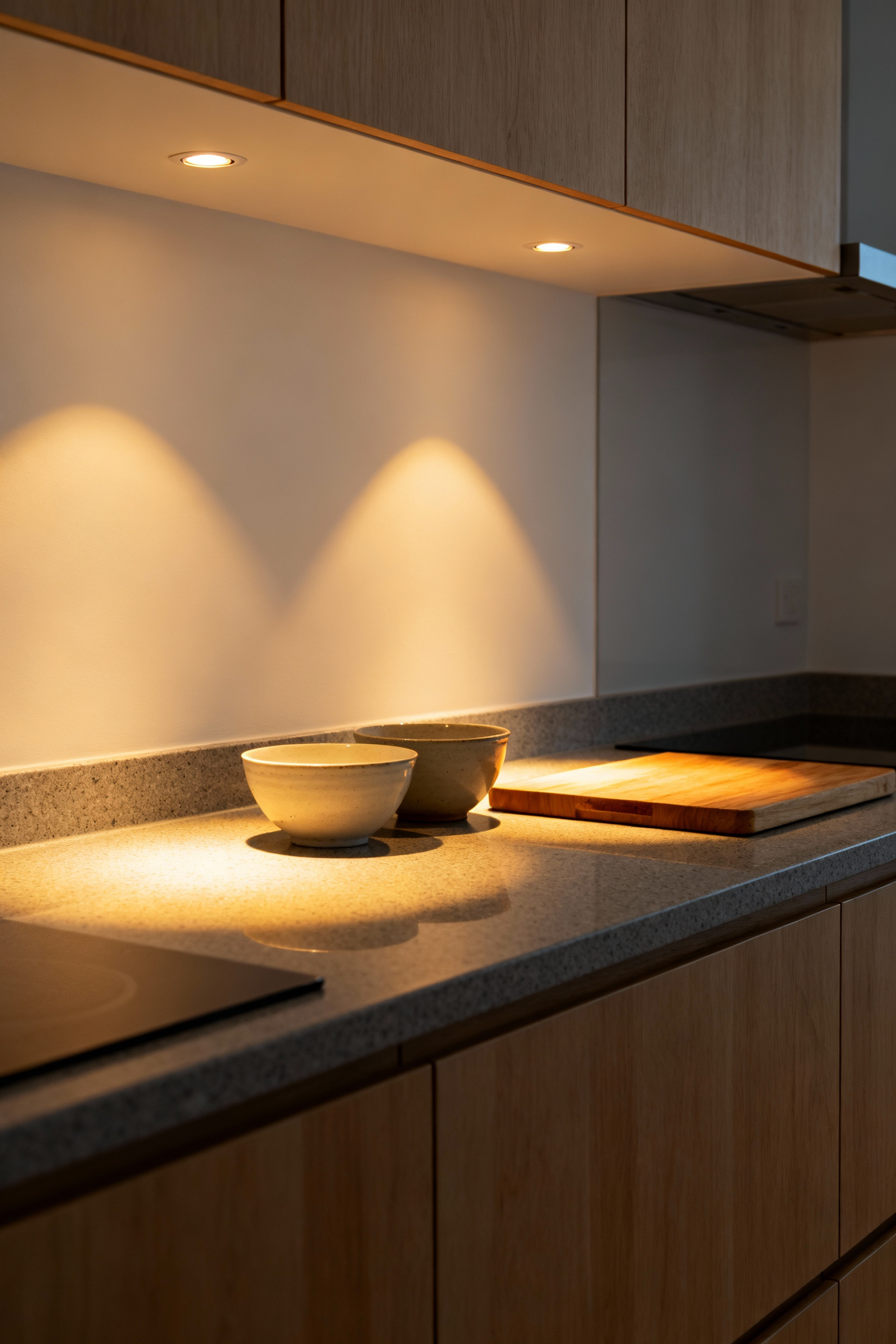
To achieve a seamless, warm workspace, treat these lights as dedicated tools rather than general ambiance. Focus on three adjustments for the best result:
By directing the light with intention, the fixture remains an invisible worker, leaving only a clean, inviting glow that makes the daily ritual of cooking a joy.
In the Nordic home, light acts as a tool for both clarity and comfort, bridging the gap between sharp utility and *hygge*. To achieve this balance, reject the visual clutter of spotty puck lights. Instead, install continuous LED tape runs. This choice eliminates shadows and washes your workspace in a seamless layer of illumination. Furthermore, conceal the fixture behind a cabinet light rail. Hiding the source prevents harsh glare, allowing only a refined glow to highlight your natural materials and backsplash.
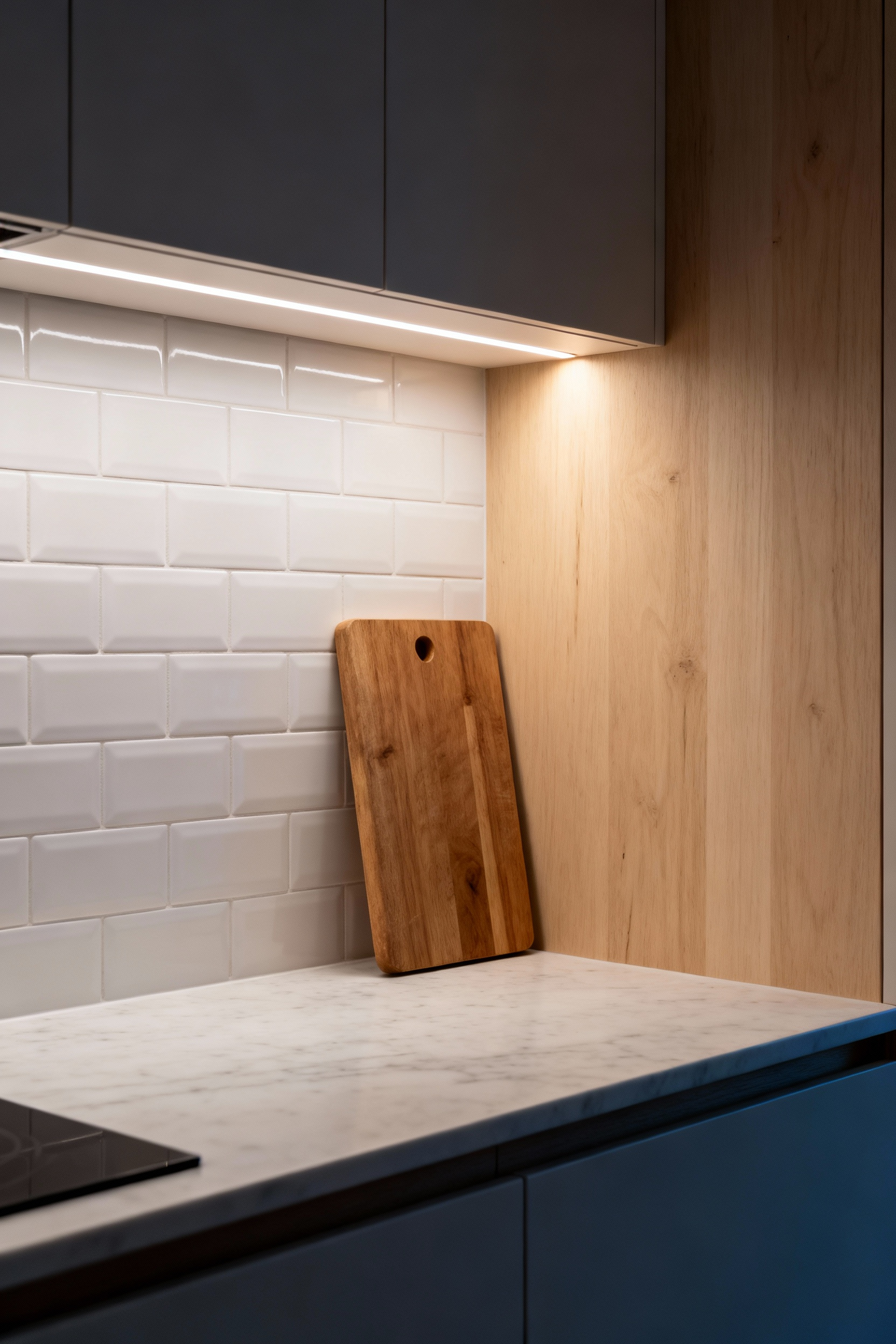
However, static light fails to honor the rhythm of the day. Growing up with long, dark winters taught me that our environment must adapt to our energy levels. Prioritize tunable fixtures with smart dimmers to master this transition:
Simple controls allow you to curate this atmosphere instantly, proving that true minimalism creates space for warmth, not just efficiency.
Treat light as a tactile material, essential for cultivating warmth in the kitchen. Open shelf sconces transform functional storage into a curated moment of calm. Rather than flooding the room with harsh brightness, use these fixtures to cast a soft, directed glow over your favorite ceramics. This approach respects negative space, allowing the craftsmanship of each bowl or glass to breathe. To achieve the right balance, focus on these details:
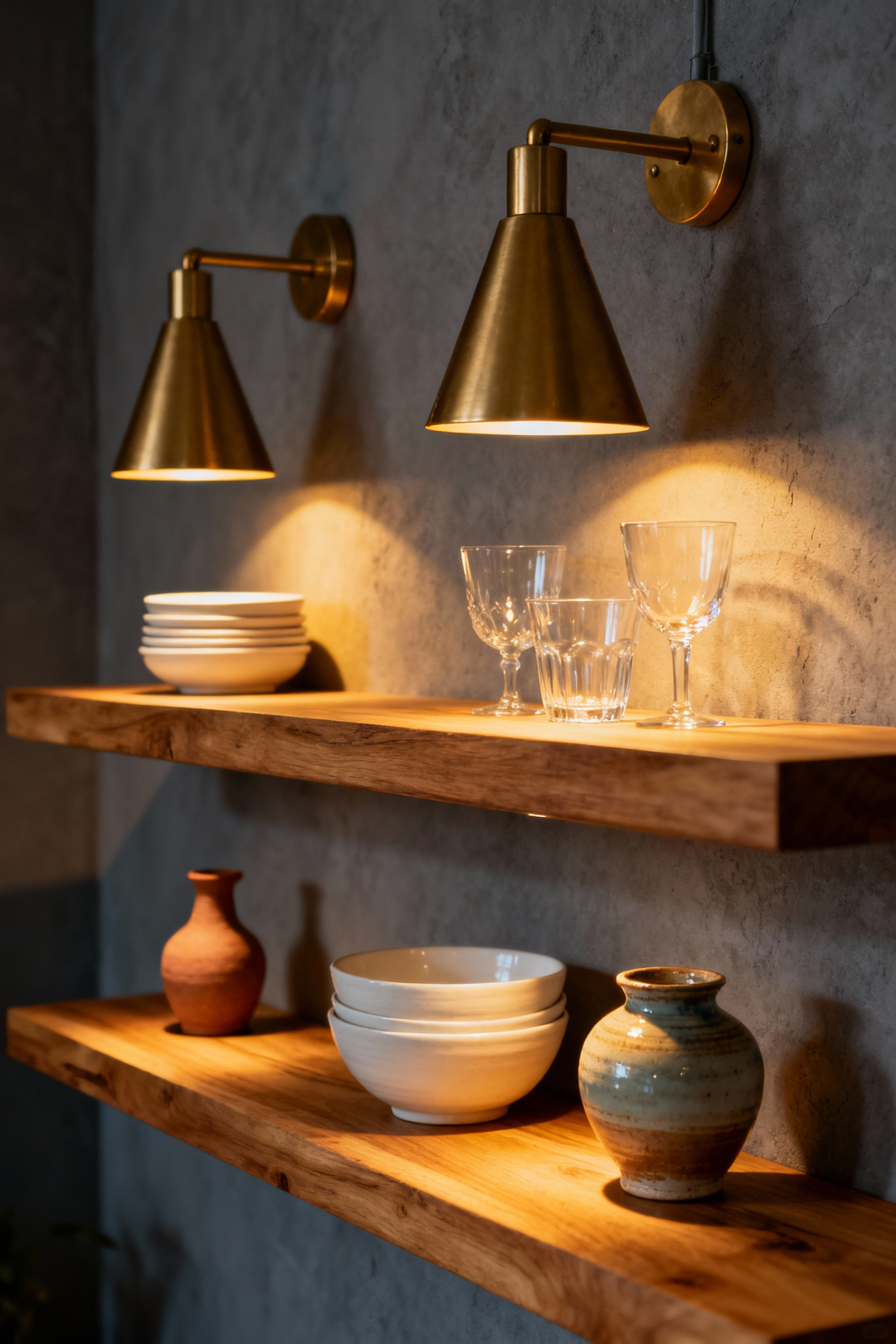
In my own home, the transition from work to rest is sacred. Always install these sconces on a dimmer switch. By lowering the intensity, you allow glassware to shimmer softly, turning a simple shelf into the quiet, glowing heart of the room.
Your choice of shade material fundamentally shapes how light behaves in your kitchen. For purposeful work zones, select metal dome shades. These opaque fixtures channel light downward, creating a precise, powerful beam ideal for tasks like slicing vegetables or reading recipes. In my own Copenhagen kitchen, I utilize brass pendants over the island; the warm metal interior softens the focused light, ensuring the space feels cozy rather than clinical. However, remember that metal prevents light from traveling upward. Consequently, you must layer in recessed or under-cabinet lights to prevent the rest of the room from feeling dark.
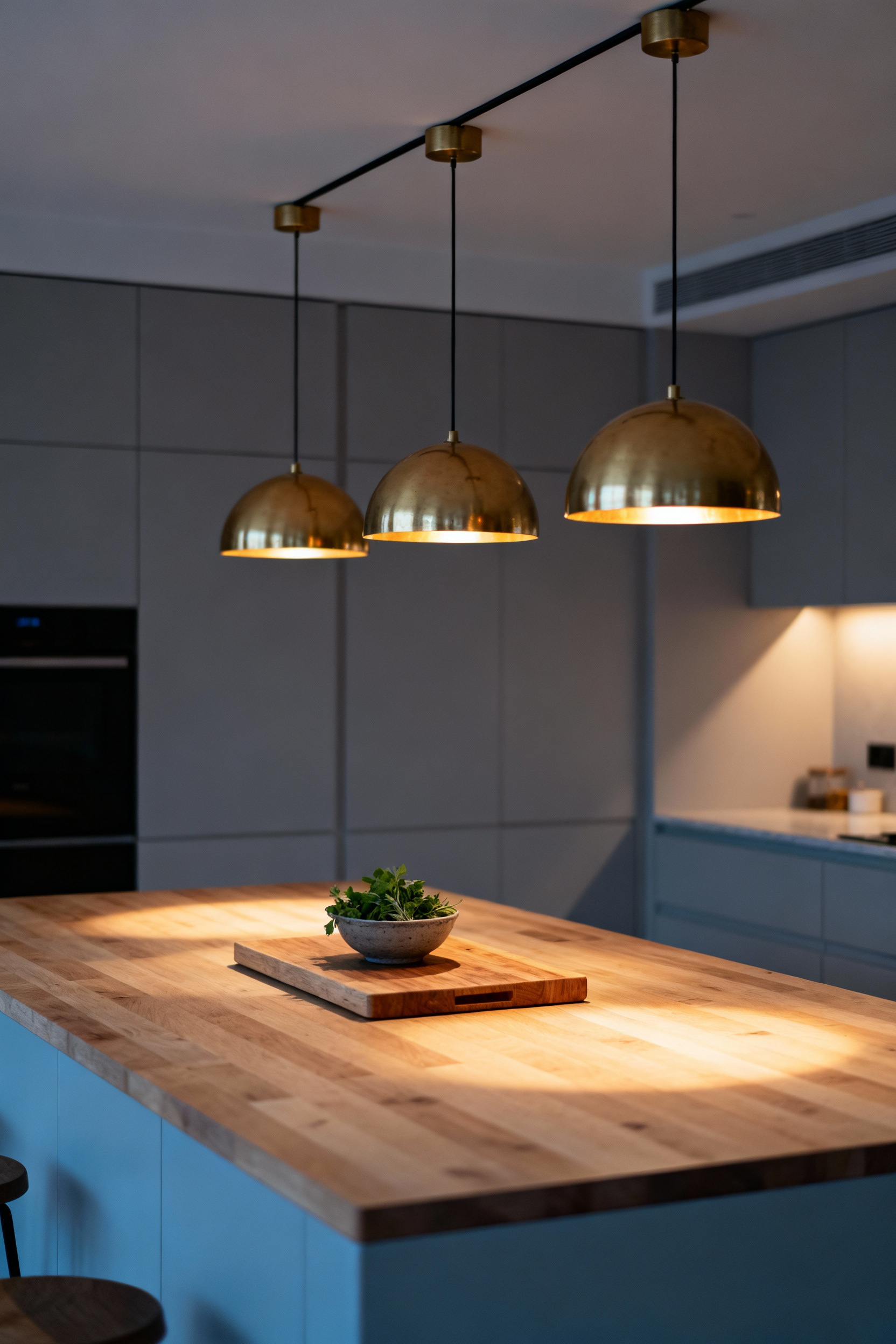
Alternatively, prioritize ambient warmth with glass. Choose frosted or opal finishes to scatter the glow outward, effectively eliminating harsh shadows. This diffusion creates the soft, welcoming environment essential for long dinners. If you prefer the airy aesthetic of clear glass, proceed with caution. Since clear glass offers no filtration, visible filaments often create straining glare. Therefore, always pair clear shades with decorative, low-glare bulbs to maintain visual comfort and true Nordic contentment.
In a pared-back Nordic kitchen, the light fixture serves as the room’s heartbeat. You must prioritize volume over intricate ornament to create a clutter-free focal point. Select a single pendant with a bold, organic silhouette or utilize open frames that embrace negative space. My own dining table relies on a simple, oversized globe that captures the soft winter light, proving that true luxury lies in thoughtful simplicity. To achieve this balance of form and function, apply these principles:
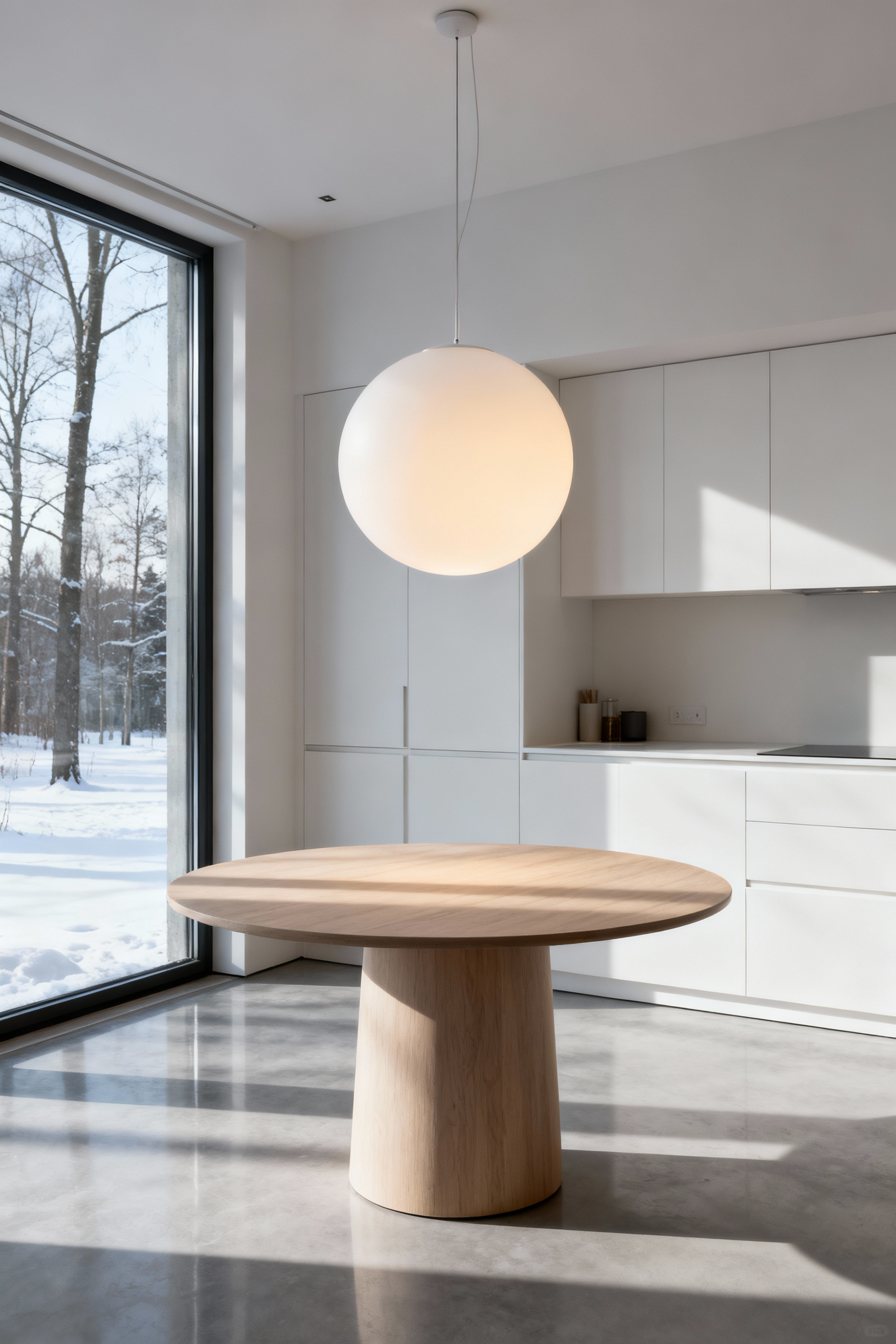
By controlling the intensity, you change the entire mood of the space. The true statement in minimalism is often the quality of the light itself, not just the hardware holding it.
Washing dishes offers a rare pause in a busy day. Yet, poor lighting often breaks this quiet rhythm. To reclaim this time, position a pendant or sconce directly above the basin. This specific placement prevents your body from casting a shadow over your hands, keeping the work clear and efficient. Furthermore, prioritize flexibility by installing a dedicated dimmer switch. This simple tool allows you to toggle between two necessary moods:
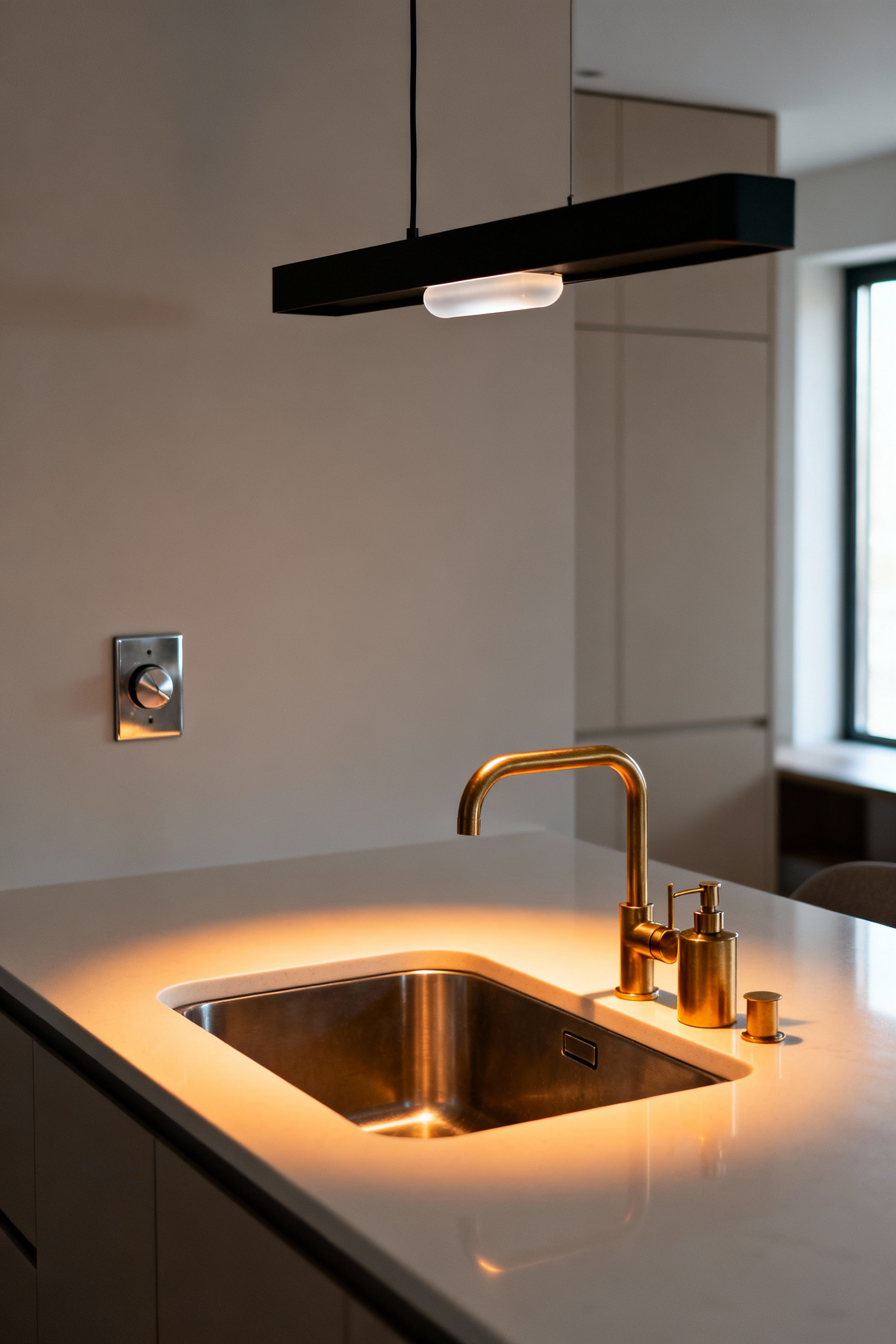
True Nordic design balances this function with deep comfort. I grew up watching my grandmother tend to her kitchen by the soft light of a simple glass globe, and I strive to recreate that warmth for every client. Select LED bulbs in the 2700K–3000K range to mimic an inviting, candlelight atmosphere. Pair these with shades made of alabaster, matte glass, or rattan. These organic materials diffuse the beam and eliminate harsh glare. Ultimately, these choices elevate the sink from a utility spot to a deliberate oasis of calm.
Modern cabinetry often dominates a room with sharp, heavy lines. However, architectural cove lighting softens this presence, turning storage into a source of ambient warmth. In the Nordics, where winters are long and dark, we treat light as a tangible material rather than a mere utility. I often use concealed LEDs in my own kitchen to combat the starkness of minimalist cupboards, ensuring the space feels cozy rather than clinical. Plan this illumination as an integral part of the architecture, specifying recessed channels to hide fixtures completely.
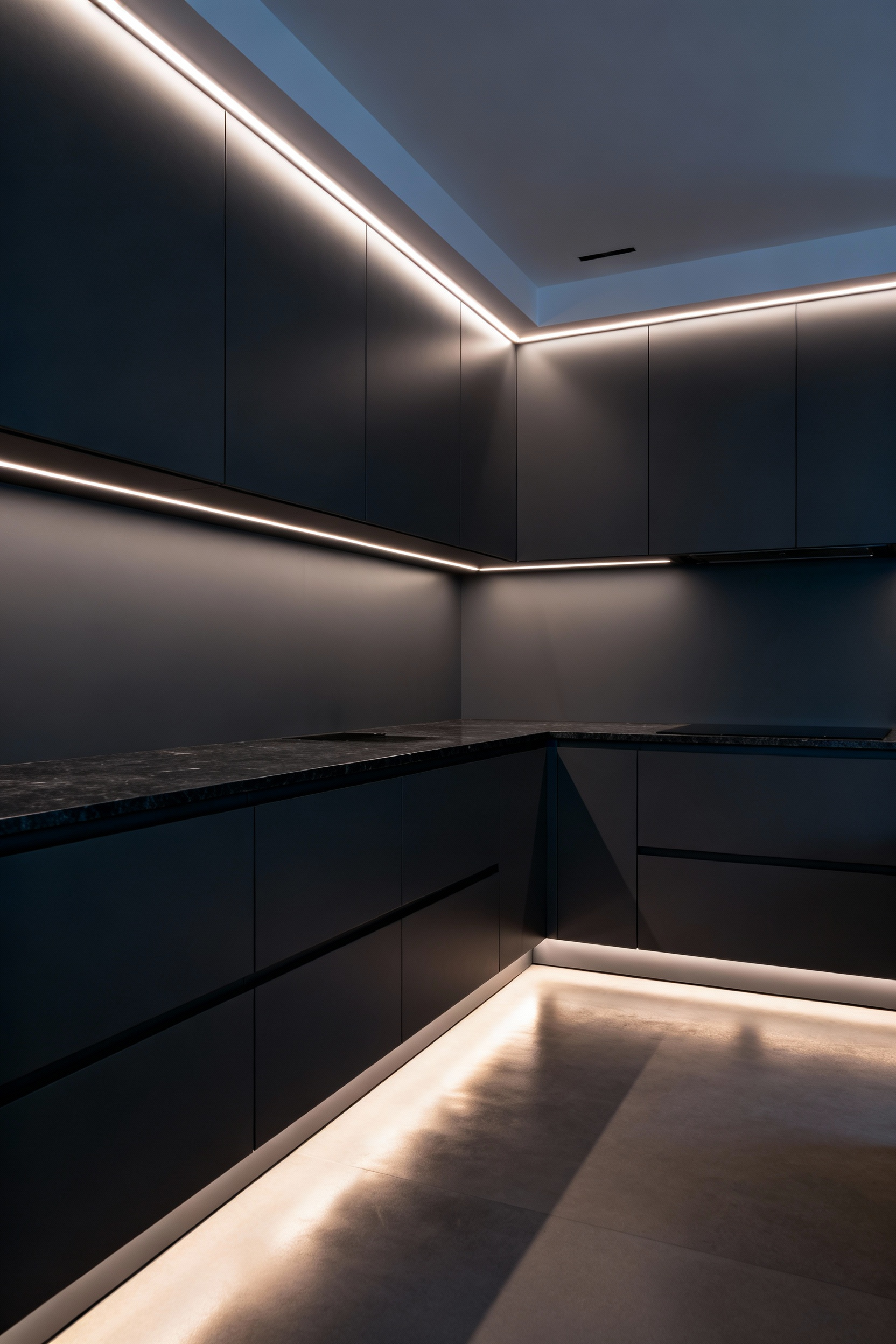
To achieve a balanced, “floating” aesthetic, apply these specific techniques:
Finally, always select warm, dimmable LEDs between 2700K and 3000K. This temperature control ensures your kitchen functions as a welcoming living space, effectively balancing the necessary brightness of task lighting with soft, diffused comfort.
I grew up in a home where the kitchen lamp signaled the end of the workday; once the harsh overheads clicked off and the small lamp clicked on, the space became a sanctuary. In Scandinavia, we combat the long dark not with sheer brightness, but with warmth. Treat your culinary space like a living room by layering your light to soften hard surfaces. Switch off utilitarian LEDs after cooking and instead illuminate a quiet corner with a mid-sized table lamp. This simple shift changes the room’s energy, inviting contentment rather than urgency.
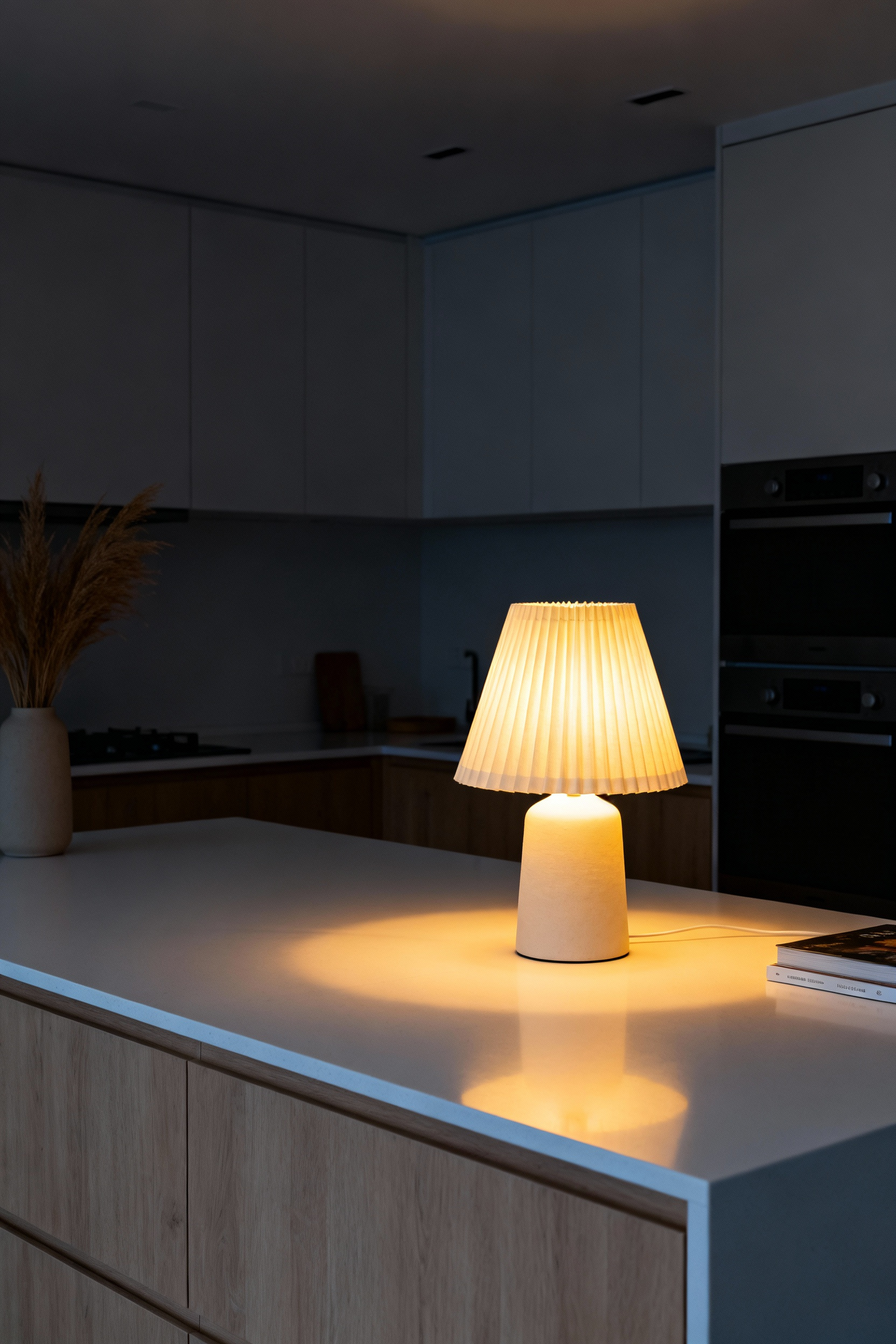
To maintain a clean, serene aesthetic while boosting coziness, consider these design guidelines:
This approach creates an unexpected vignette, transforming a functional station into a cozy retreat for lingering over evening tea.
True Scandinavian living embraces the natural rhythm of the day. We move from the sharp clarity of morning work to the intimate warmth of evening socializing, a shift essential for creating *hygge*. To master this, implement a zoned dimming system that separates your lighting layers completely, allowing you to adjust the room’s energy with precision:

Furthermore, treat your island pendants as the room’s emotional anchor. Place these fixtures on a dedicated switch to instantly transform a functional counter into a sophisticated dining space. Quality is non-negotiable; ensure you install specific “Trailing Edge” dimmers compatible with your LEDs. This prevents the harsh flickering that destroys a calm mood. Growing up in winters with limited daylight, I learned early on that the ability to control light is not a luxury; it is a necessity for contentment.
True Nordic design honors permanence. We reject “throwaway” culture in favor of lasting quality. Prioritize integrated LED fixtures with a 50,000-hour lifespan to drastically reduce waste. Beyond the bulb, select fixture materials that age gracefully. I often specify reclaimed wood or recycled aluminum for my clients in Copenhagen because these materials withstand time while minimizing environmental impact. A lamp should remain beautiful and functional long after a trend fades.
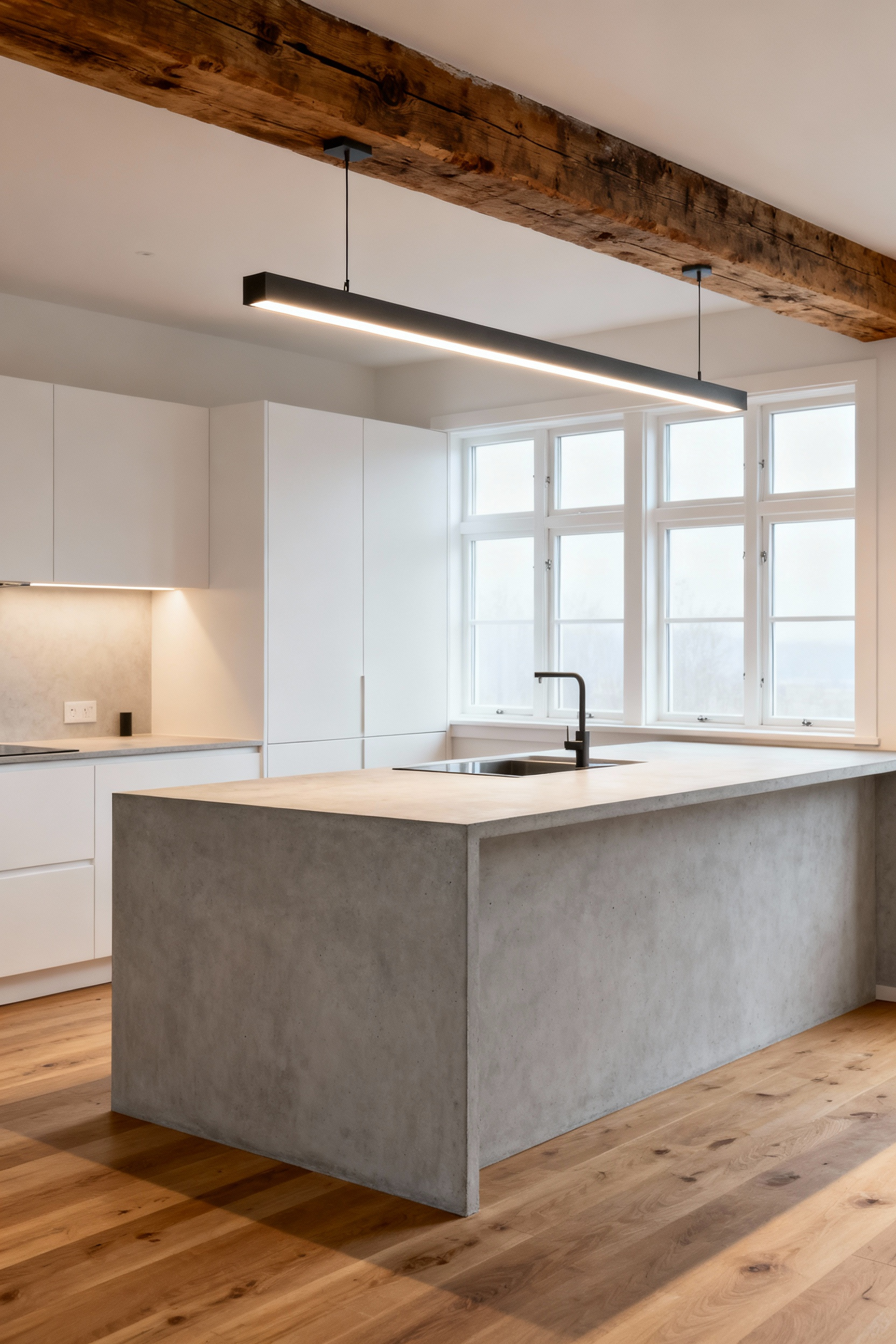
Control remains just as vital as material. In our long, dark winters, we master light through thoughtful layering rather than excess brightness. Implement these strategies to maximize efficiency without sacrificing warmth:
Smart systems ensure your home acts efficiently, consuming energy only when necessary. This approach creates a kitchen that feels both responsible and deeply inviting.
True minimalism demands intention, not just emptiness. You must decide if a cord is visual noise or a sculptural asset. For a calm, seamless kitchen, fully conceal the wiring for recessed or under-cabinet lights. Hide these practical elements behind custom cabinet valances or within low-profile, paintable raceways. This strategy eliminates clutter and allows the eye to rest on the light itself, maintaining the peaceful rhythm of the room.

Conversely, function creates its own beauty. I often celebrate the mechanics of a pendant light rather than fighting them, especially when a junction box sits off-center. If you choose to expose wiring, do so with conviction using these approaches:
By treating the wire as an essential material, you transform a technical necessity into a deliberate design feature.
The optimal number of pendants depends on the length of your island and the size of the fixture. For the best visual balance, ensure the pendants are spaced evenly, typically 24 to 30 inches apart (measured from center to center). If your island is standard size (6–8 feet), three medium-sized pendants usually work best, creating an appealing constellation effect and providing ample task lighting.
For task areas—such as preparation zones, under cabinets, and sinks—a color temperature between 3000K and 3500K is ideal. This range provides a crisp, neutral white light that offers high clarity for cooking without feeling sterile. Reserve the warmer 2700K tones for ambient fixtures (like chandeliers or decorative sconces) to encourage coziness and relaxation.
To ensure shadow-free preparation, recessed fixtures should be placed approximately 12 to 18 inches away from the wall (measured from the center of the light). This placement ensures the beam of light hits the front edge of the countertop, illuminating the workspace directly. Avoid placing the lights in the center of the ceiling, as this forces the cook to stand in their own shadow while working.
A well-designed kitchen requires three layers of light: 1. Ambient: General overhead illumination (e.g., recessed lights or flush mounts). 2. Task: Focused light for working (e.g., under-cabinet LED strips, low-hung island pendants). 3. Accent: Decorative light to highlight features or create atmosphere (e.g., open shelf sconces, cove lighting, or toe-kick lights).
To transform your kitchen into a sanctuary, move beyond simple utility. Embrace the Nordic balance of function and feeling by layering your light sources. Distinguish the sharp clarity needed for prep work from the soft warmth required for an evening meal. Install dimmers on every circuit to gain total control over the atmosphere. This simple adjustment allows the room to breathe, shifting effortlessly from a busy workspace to a calm retreat as the day ends.
Remember that light shapes our emotional well-being. Choose high-quality kitchen light fixtures that reveal the true vibrancy of your ingredients, but let warmer tones guide your relaxation. Use hidden accents within cabinetry or along toe-kicks to add depth without visual clutter. This soft, indirect glow creates a sense of intimacy, proving that minimalist design can feel incredibly warm when executed with care.
Your kitchen deserves to be more than a culinary factory; it should be a place of restoration. Review your current setup this week. Swap a harsh bulb for a softer temperature or install that essential dimmer switch. Let the light serve your life, creating a space where you do not just cook, but truly find contentment.